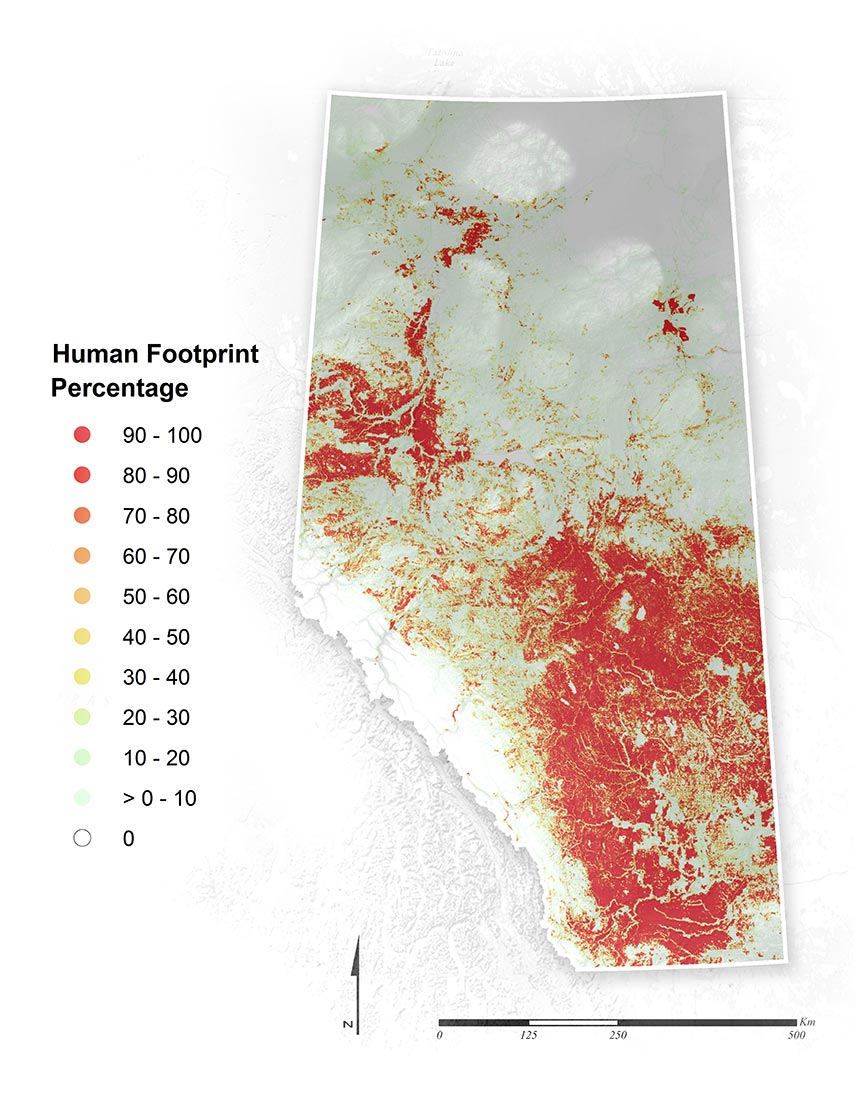INTRODUCTION
Explore the status and trend of human footprint in Alberta
During the past century, the availability of natural resources in Alberta has defined human landuse patterns, in both time and space. The province was considered a farming frontier in the late 1800s, and most of Alberta’s human footprint in the central and southern parts of the province is the result of this farming legacy. While agriculture remains important, other human land uses, particularly forestry and oil and gas development, have expanded in recent decades into previously undisturbed areas in the Foothills and Boreal Forest Natural Regions. To meet Alberta’s growing population needs, urban areas have expanded to keep up with industrial growth. As these activities continue, understanding and managing the cumulative effects on biodiversity are priorities in Alberta.
